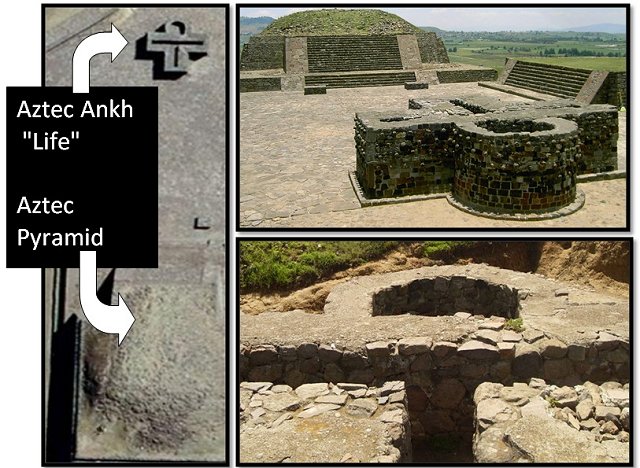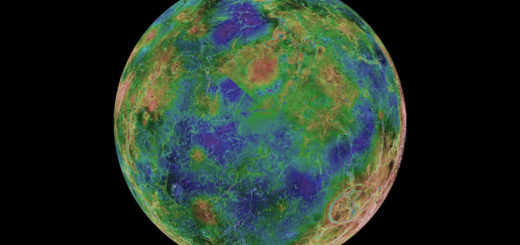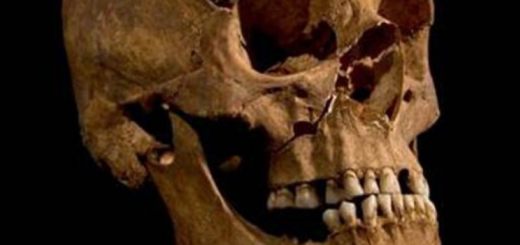Unexplained Mystical Structure: Egyptian ‘Ankh Cross’ Temple Built By The Aztecs?
– The Egyptian ankh cross…in Mexico? That’s right. The ruins of a mysterious Aztec temple bears a strange and striking resemblance to Egypt’s ankh cross.
This Aztec ankh temple is perfectly aligned with an Egyptian-like stone pyramid at the same archaeological site. Scholars doubt any Aztec connection to the Egyptians, since both cultures evolved on opposite sides of the Atlantic Ocean, and were never in contact.
Yet, strangely, the meaning of this Aztec ankh seems suspiciously parallel to the meaning behind Egypt’s ankh cross.

The Aztecs and the Egyptians were parallel civilizations in many ways, despite having evolved on opposite sides of the Atlantic Ocean. Both cultures built pyramids, both used solar symbolism, and both believed in life after death, preparing their dead for a journey to the afterlife via an elaborate and highly-ritualistic ceremony.
Both cultures also used a very similar “tau” cross symbol–for the very same purpose: To signify the forces and interplay between physical life (which they saw as temporary, material) and spiritual life (which they saw as eternal, spiritual).
In Egypt, this cross was called “ankh,” which was formed by a “tau” cross (looks like the letter “T”) with a loop on top of it:
In Mexico, the Aztecs and Mayas used the same exact “tau” cross, only with no loop:
Usually the Aztecs did not put a loop above their tau cross. However, there exists in ruins a cruciform-shaped building located at an archaeological site called Calixtlahuaca in present-day Mexico. This Aztec ankh cruciform building is stunningly similar, in both shape and design, to countless ankh crosses depicted by the Egyptians.
Can it be proven that both the Egyptians and Aztecs use this same cross symbol to convey the same spiritual beliefs?
The Ankh was, for the ancient Egyptians, the symbol (the actual hieroglyphic sign) of life. But not the “life” that we think of when we use the word “life”; it was symbolic of another kind of life, namely the spiritual life of the soul that most of us do not recognize in our day-to-day existence.
The Aztecs believed in precisely this same “life” as the Egyptians. For the Aztecs (as for many of us) a person’s death was not the end of their existence; instead it was the end merely of the physical life of that person. There was something inside that continued to exist, that lived on after death:
Whereas the Egyptians used the ankh cross (formed in part by the tau) to express this concept of “life” beyond death, the Aztecs did as well. The Aztec tau cross was identical to the Egyptian:
Aztec tau cross, also called the Tree of Life, housed in the Anthropology Museum in Mexico City. This image recurs in Prehispanic codices.
As a symbol of the Tree of Life, the Aztec tau cross (like the Egyptian tau) symbolized the concept of “life” and “life after death”–the same “life after death” the Egyptians symbolized using the ankh cross.
It should be noted that the Aztecs were not the only pre-Columbian American culture to use the Tau; the T-shaped doorway or window appears as a common architectural motif in stone masonry across Mesoamerica. It is found, for instance, at Chaco Canyon in northern New Mexico and Mesa Verde in southwestern Colorado.
In his classic book Atlantis: the Antediluvian World, Ignatius Donnelly says the tau was an important icon signifying “hidden wisdom” for Mexicans as well as for Peruvians, Egyptians, Phoenicians, and Chaldeans. Donnelly says it was emblematic of rejuvenation, freedom from physical suffering, hope, immortality, and divine unity.
The mystic Manly P. Hall held a similar view:
Getting back to the tau being a direct link that connects the Egyptians with the Aztecs, we can see in the following parallel artwork how both cultures, the Egyptians and Aztecs, created similar drawings associated with the tau cross.
Note how in both images above there are deities flanking the cross. In both instances the deities are striking symmetrical poses, facing the cross. Also, in both instances, the deities seem to be making the same precise bodily gestures. We see this in the positions of the hands, arms, legs, feet and heads.
In one of the Qabbalistic Masonic legends, Hiram Abiff is given a hammer in the form of a TAU by his ancestor, Tubal-cain. The tau cross is preserved to modern Masonry under the symbol of the T square. This appears to be the oldest form of the cross extant.
The Fool, sitting for days beneath the tree of life (which has the shape of a tau cross) intent on finding his spiritual Self, suddenly climbs a branch and dangles upside down like a child, forgetting for a moment, all that he is and all that he knows.
Money and coins fall down from his pockets, but instead of seeing money he sees merely metal and paper. He feels as though he’s hanging between the mundane world and the spiritual world, able to see both. The moment feels surreal; connections he never understood before are made, mysteries are revealed.
The biggest mystery of all is the realization that he is not merely the physical body, that part of himself that is physical and temporary. He is composed of a spiritual inner Self, a soul, and that this soul is eternal; it was never born and will never die. In his book The Pictorial Key to the Tarot, A.E. Waite, the designer of the Rider-Waite tarot deck, described the Hanged Man as the man who suddenly recognizes—or, better, “resurrects”—his higher Self and higher nature, which until then had in a sense been “dead” within him:
“The gallows from which he is suspended forms a Tau cross…There is a nimbus about the head of the seeming martyr. It should be noted (1) that the tree of sacrifice is living wood, with leaves thereon; (2) that the face expresses deep entrancement, not suffering; (3) that the figure, as a whole, suggests life in suspension, but life and not death…He who can understand that the story of his higher nature is imbedded in this symbolism will receive intimations concerning a great awakening that is possible, and will know that after the sacred Mystery of Death there is a glorious Mystery of Resurrection.”–A.E. Waite, The Pictorial Key to the TarotIn Conclusion
Today, the prevailing anthropological view of antiquity among scholars is that ancient and indigenous peoples worldwide developed their own complex cultures independent of outside influence or inspiration.
Any suggestions to the contrary have been generally dismissed as either fanciful, racist, or demeaning. Ancient peoples worldwide, scholars have argued, were fully capable of developing their own civilizations.
But, nagging evidence still remains; evidence like the ankh cross and tau cross symbol being found worldwide, and particularly among the Egyptians and pre-Columbian American cultures.
To read more, buy my new book Written In Stone: Decoding The Secret Masonic Religion Hidden In Gothic Cathedrals And World Architecture .
Written by Richard Cassaro – MessageToEagle.com Contributor
About the author: Richard Cassaro – is a journalist, speaker and author of Written In Stone: Decoding The Secret Masonic Religion Hidden In Gothic Cathedrals And World Architecture.The book uncovers a lost Wisdom Tradition that was practiced globally in antiquity, found memorialized in pyramids, Triptychs, and identical images worldwide. Visit his blog – Discovery & Arrival Of Lost Ancient Wisdom where you can follow his comprehensive research.Copyright © Richard Cassaro



 Creators of mankind
Creators of mankind Description of “Tall white aliens”
Description of “Tall white aliens” Where they came from?
Where they came from? About hostile civilizations
About hostile civilizations The war for the Earth
The war for the Earth “Tall white aliens” about eternal life
“Tall white aliens” about eternal life Video: “Nordic aliens”
Video: “Nordic aliens” Aliens
Aliens Alien encounters
Alien encounters The aliens base
The aliens base UFO
UFO Technology UFO
Technology UFO Underground civilization
Underground civilization Ancient alien artifacts
Ancient alien artifacts Military and UFO
Military and UFO Mysteries and hypotheses
Mysteries and hypotheses Scientific facts
Scientific facts


















